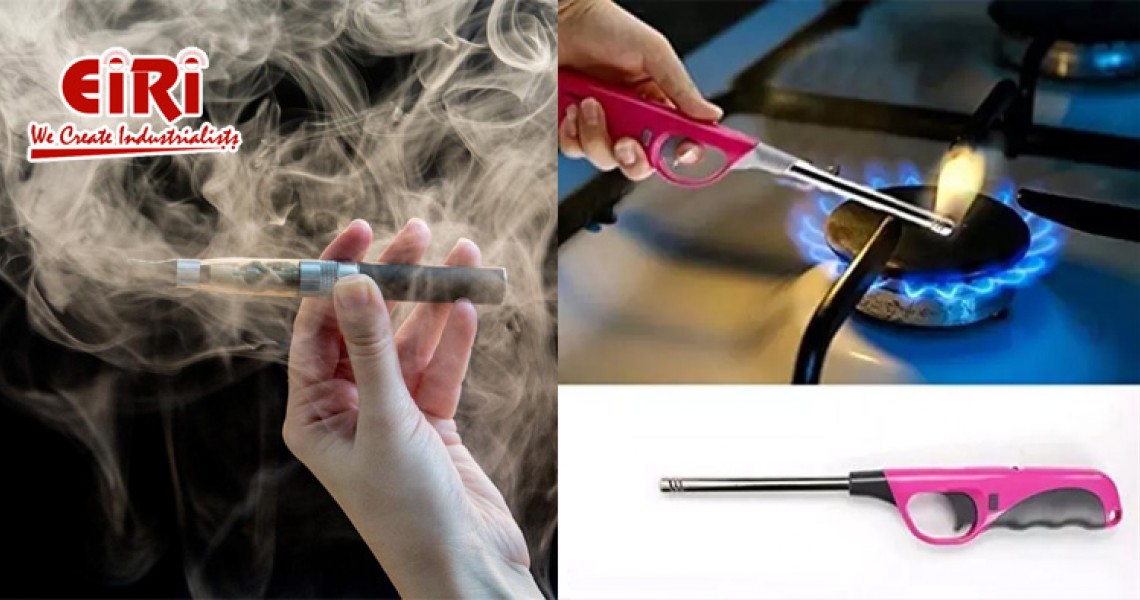Electronic Cigarette and Gas Lighter Manufacturing - The Evolution of Smoking Technology

Smoking has been a part of human culture for centuries, evolving from traditional methods to modern innovations like electronic cigarettes and gas lighters. In this article, we'll explore the manufacturing processes, technologies, market trends, and regulatory landscape surrounding these smoking alternatives.
1. Electronic Cigarette Manufacturing
Electronic cigarettes, commonly known as e-cigarettes or vapes, have gained popularity as a tobacco alternative and smoking cessation aid. The manufacturing process for electronic cigarettes involves several key steps:
1.1. Component Fabrication:
The primary components of an electronic cigarette include the battery, atomizer, and e-liquid reservoir. Batteries are typically lithium-ion cells, manufactured using automated processes to ensure quality and safety. Atomizers, responsible for heating the e-liquid and producing vapor, are often made from stainless steel or other heat-resistant materials using precision machining techniques. The e-liquid reservoir, usually a refillable tank or disposable cartridge, is molded from food-grade plastics or glass.
1.2. E-Liquid Production:
E-liquid, the substance vaporized by electronic cigarettes, is a mixture of propylene glycol (PG), vegetable glycerin (VG), flavorings, and nicotine (optional). The production of e-liquid involves blending these ingredients in controlled environments to achieve consistent flavor profiles and nicotine concentrations. Quality control measures, such as laboratory testing for contaminants and nicotine accuracy, are essential to ensure product safety.
1.3. Assembly and Quality Control:
Once the individual components are fabricated and the e-liquid is prepared, the electronic cigarettes are assembled in dedicated manufacturing facilities. Automated assembly lines handle tasks such as battery insertion, atomizer attachment, and e-liquid filling. Rigorous quality control procedures, including visual inspections, performance testing, and batch sampling, are implemented to meet regulatory standards and ensure consumer safety.
1.4. Packaging and Distribution:
Finished electronic cigarettes are packaged in consumer-friendly formats, often including user manuals, charging cables, and spare parts. Packaging materials must comply with relevant regulations regarding labeling, child-resistant features, and product warnings. Distribution channels vary, encompassing online sales, retail stores, and specialty vape shops, with strict age verification measures in place to prevent underage access.
2. Gas Lighter Manufacturing
Gas lighters, also known as butane lighters or cigarette lighters, have been a ubiquitous accessory for smokers since their invention. The manufacturing process for gas lighters involves several stages, from component fabrication to final assembly:
2.1. Body and Mechanism Production:
The main body of a gas lighter is typically made from metal or plastic, with various designs and finishes to cater to different consumer preferences. Injection molding and die casting are common methods for producing lighter bodies, while the internal mechanism, including the ignition system and gas flow control, is assembled separately.
2.2. Butane Gas Filling:
The fuel reservoir of a gas lighter is filled with liquefied butane gas, which serves as the combustible fuel source. Automated filling machines inject precise amounts of butane into each lighter reservoir, ensuring consistent performance and safety. Pressure testing and leak detection mechanisms are employed to verify the integrity of the gas seals and prevent gas leakage.
2.3. Flint and Wick Installation:
Traditional gas lighters utilize a flint and wick mechanism to generate sparks and ignite the gas. Flint stones and cotton wicks are installed in dedicated stations along the assembly line, with automated machinery ensuring accurate placement and alignment. Quality control checks verify the functionality of each ignition component before proceeding to final assembly.
2.4. Assembly and Packaging:
The final assembly of gas lighters involves fitting together the various components, including the body, ignition mechanism, gas reservoir, and safety features like child-resistant locks. Automated assembly lines streamline this process, with visual inspections and functional tests performed at each stage to maintain quality standards. Once assembled, gas lighters are packaged in blister packs or cardboard boxes for retail distribution.
3. Market Trends and Regulatory Landscape
The electronic cigarette and gas lighter industries are subject to evolving market trends and regulatory frameworks:
3.1. E-Cigarette Regulation:
The regulation of electronic cigarettes varies widely across different countries and regions. While some jurisdictions impose strict restrictions or outright bans on e-cigarette sales and marketing, others adopt more permissive approaches, often with age restrictions and product safety requirements. Regulatory bodies like the Food and Drug Administration (FDA) in the United States and the European Union's Tobacco Products Directive (TPD) play crucial roles in shaping e-cigarette policies and standards.
3.2. Gas Lighter Safety Standards:
Gas lighters are subject to safety regulations governing their design, construction, and labeling. Requirements related to child-resistant mechanisms, flame height adjustments, and fuel leakage prevention are enforced to mitigate fire hazards and protect consumers. International standards organizations such as the International Organization for Standardization (ISO) and national regulatory agencies set guidelines for lighter safety and performance.
3.3. Market Dynamics:
The electronic cigarette market has experienced significant growth in recent years, driven by increasing awareness of the health risks associated with traditional tobacco smoking and growing demand for smoking cessation aids. Technological advancements, such as pod-based systems and temperature-controlled vaping devices, continue to drive innovation and market expansion. Similarly, the gas lighter market remains robust, with steady demand from smokers and outdoor enthusiasts despite competition from alternative ignition methods like electric lighters and matches.
Conclusion
The manufacturing of electronic cigarettes and gas lighters represents a dynamic intersection of technology, consumer preferences, and regulatory considerations. From precision engineering to stringent quality control measures, manufacturers in these industries must navigate complex challenges while meeting the evolving needs of smokers worldwide. As smoking habits continue to evolve and regulatory landscapes shift, the electronic cigarette and gas lighter industries are poised to adapt and innovate, driving progress towards safer and more sustainable smoking alternatives.










